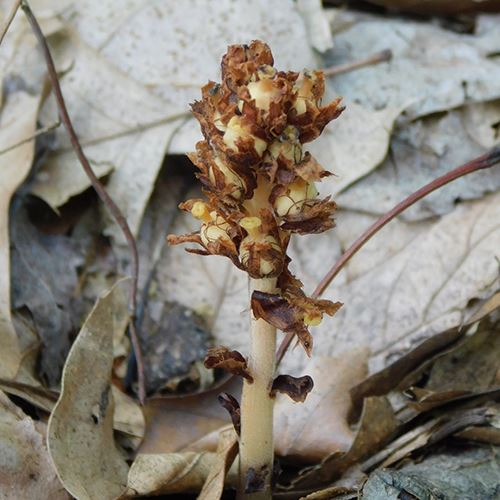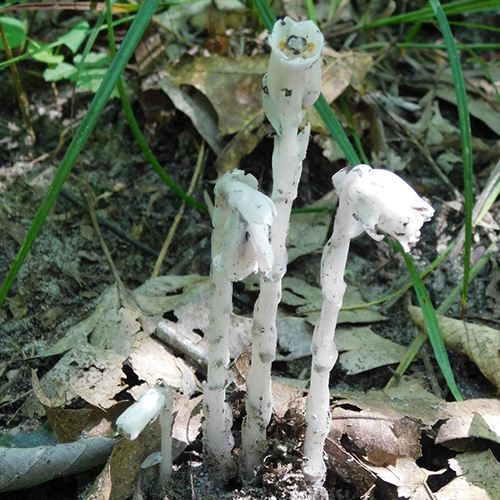Not All Plants Are Green

Not All Plants Are Green
By: Ashley Fink and Liz Stahl
If you can think back to your days in biology class you may recall learning that plants rely on a process called photosynthesis in order to convert light energy into chemical energy for food. However, surprisingly, there are plants that do not undergo photosynthesis at all.
Most plants are green because of the chlorophyll present in them. Chlorophyll (a green pigment) plays a crucial role in the survival of these green plants through this important process. While this is the case for many plants, there are exceptions. Interestingly, not all plants use the important structure chlorophyll and undergo photosynthesis, some plants have evolved to rely on other methods of producing food.
We are lucky enough to have a few of these beautiful oddities growing in the Metroparks.

A few examples of these non-photosynthetic plants you’ll find within your Metroparks are the ghost pipe (Monotropa uniflora), American cancer root (Conopholis americana), dodder (Genus: Cuscuta), and spotted coral root (Corallorhiza maculata). These plants are usually parasitic plants that steal their energy from different host sources such as other plants or fungi.
Non-photosynthetic plants have specialized structures for stealing important resources such as carbon, water, and necessary nutrients called haustoria. All of these plants are in different families, so they aren’t related and have evolved these traits independently.
--
Photos: Top, American cancer root; above, ghost pipe. Photos by Liz Stahl
Did You Know?
- There are four dodder species that are endangered in Ohio
- Approximately one percent of plant species do not manufacture their own carbohydrates through photosynthesis